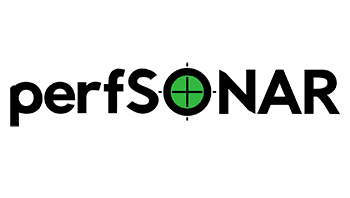By
Amber Rasche - Senior Communications Specialist, Internet2
Estimated reading time: 5 minutes
Mark Feit is a principal software engineer at Internet2, one of the core developers on the perfSONAR team, and a presenter at the upcoming Internet2 TechEXtra: perfSONAR Day, which is being held virtually on November 3. In this Q&A, Mark shares his thoughts about the collaborative effort behind perfSONAR development and what the community can expect on perfSONAR Day.
Tell us about the perfSONAR Collaboration. Who is involved and what is the mission?
perfSONAR has a long history which began with an initiative for end-to-end performance measurement that came out of Internet2 20 years ago. It underwent development at Internet2 and several other institutions and was eventually given a stable base in 2014 when Internet2, ESnet, GÉANT, and Indiana University jointly decided to provide full-time resources to engineer and manage the project. The University of Michigan joined us in 2016. Rede Nacional de Ensino e Pesquisa (RNP), Brazil’s national research and education network, joined the project formally this year after contributing intermittently during the last two decades. Dozens of other organizations that aren’t part of the collaboration have contributed to the project as well.

The collaboration’s primary goal is to make sure perfSONAR helps the networks it measures continue to be effective tools for carrying out the scientific and educational pursuits they support. The elephant in that room is the software development effort, but we also do lots of outreach to make sure the user community knows how to make the best use of perfSONAR and that we know what we can do to make the product better.
From your perspective, how has this collaborative development approach contributed to the success of perfSONAR and the proliferation of its use within the research and education community?
The biggest benefit has been a large pipeline of input from diverse sources.
For example, Intenet2’s presence on the project benefits not just us as a network-operating organization but also our members who have their own sets of measurement problems. We’re here to help solve those, too. GÉANT and RNP are in much the same situation with their member networks, as is Indiana University with the networks they serve through the GlobalNOC and the International Networks group. ESnet has its own network and maintains a few of the tools integrated into perfSONAR, so having access to those developers through their participation in the collaboration has been helpful. The University of Michigan brought us a raft of campus applications that are largely not on wide-area network operators’ radars. That has helped us branch into areas we would not have explored otherwise and is giving perfSONAR deployment a boost.
The wide variety of new applications forced everyone involved into a big shift in how they think about perfSONAR. The first part of that shift came in 2017 with perfSONAR 4.0, which morphed the measurement infrastructure from a set of programs that could do a few things into a general-purpose platform that was easy to extend. Adding extensibility was a lot of work up front, but the payoff has been the addition of dozens of new types of measurements, tools with which to carry them out, and ways to deliver the results to other systems — all with considerably less work. The following year, we made significant changes to the way perfSONAR nodes operate together as meshes. perfSONAR 5.0, which is currently in development, will bring a similar overhaul to the remaining parts of the system that have yet to incorporate the new philosophy. You’ll have to join us for perfSONAR Day to learn more about those changes.
What can those attending perfSONAR Day expect to learn about the state of the project? What are you most looking forward to?
There’s been only one feature release since the last perfSONAR Day, so there’s not a whole lot to report on the current-state front. As I mentioned, we have a new major release in the pipeline: perfSONAR 5.0. That’s going to be front-and-center for this year’s morning sessions that cover where we’re headed, new features, what’s being replaced, and where network operators will be able to run the system in the future. During a break for lunch, we’ll have an open floor for questions and comments. The afternoon sessions will cover more nuts-and-bolts technical topics that apply to the current release, along with some lightning talks. (Speaking of which, we could use a few more speakers for those. If you have a short topic about how you use perfSONAR, please drop us a line at perfsonar-training@internet2.edu.)
What I’m most looking forward to is longer-term than this event: being able to meet up in person again. The fact that last year’s perfSONAR Day didn’t require travel brought a lot of new people to join us, and we always welcome that. What’s missing is the spontaneous conversations in the hallways and over meals that have spurred more feature additions to perfSONAR than I can count. I encourage everyone, whether they’re new to perfSONAR or have been with it since the early days, to join us next month and take part in shaping its future. perfSONAR is a community-driven product, so understanding the community’s wants and needs makes it a useful tool.
Join Us for perfSONAR Day 2021
Interested in learning more about perfSONAR 5.0? There’s still time to register for perfSONAR Day, which is being held virtually on November 3 from 10 a.m. to 3:05 p.m. ET.
Up Next
Stay tuned later this week for a Q&A with Mike Simpson, director of network systems and software at Internet2, on the role of perfSONAR in Internet2’s Next Generation Infrastructure. Mike will talk about expanding and upgrading Internet2’s perfSONAR capabilities to support the new network.
About the Author(s)
Amber Rasche contributes to Internet2’s strategic communications and public relations efforts. She has 10 years of experience with the research and education community, serving previous roles in both higher education information technology and government high-performance network environments.